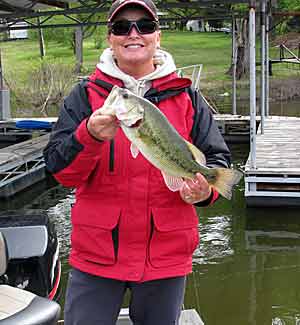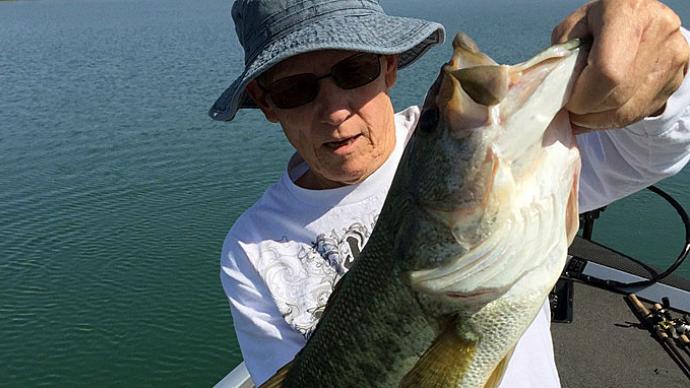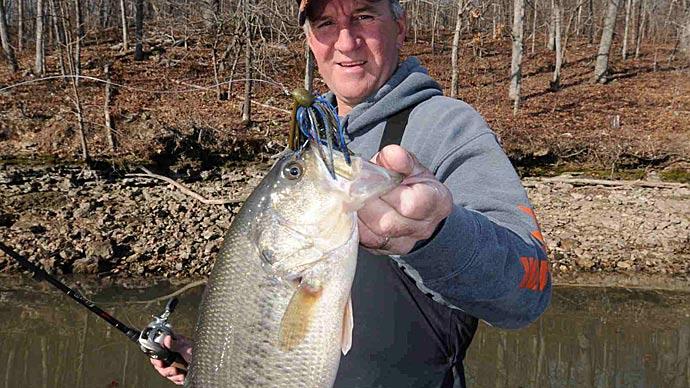
Some years ago, a BassResource reader wrote a letter to the editor about the lake reports in the forums. He was confused about how lake reports for lakes he had never fished would help him find and catch bass at his favorite lake, which happened to be Bob Sandlin.
While I can understand someone not realizing that a lake report for a lake in Oklahoma would do them any good in Texas, it's beyond me why they wouldn't read it anyway. Anyone who logs on to BassResource should read everything in it. I say this because you'd be amazed at how much help all the staff writers can be regardless of what lake or subject they might be covering. Even the bass club reports and tournament results in the forums can give insight into how the fishing was and other things like what lures caught fish, etc.
Fishing knowledge is knowledge. What I mean is bass don't know where they live. Trophy bass, in particular, follow specific patterns in their daily lives. That doesn't change drastically, whether they live in Texas or wherever. Large bass are the most stable fish in any population. Their daily habits are much less subject to outside interference or influence than smaller bass. But even smaller bass have basic patterns they live by because those patterns work. County and state lines only intersect human lives. The creatures do not know that they should act differently because they live in another state.
Although I had never fished Bob Sandlin at the time of the letter mentioned above, I don't believe there would have been any problem for me to have gone to the lake and located trophy bass there. Because of what I know about the habits and lifestyles of largemouth bass, the same application can be used at any lake. When it is time for bass to utilize creek channels in their movements, they will be doing so at lakes with similar water temperatures and weather. When some of the bass have dropped off to deeper water following the spawn, it will be the same at many other lakes across the nation. Perhaps not at the same time, as our fish do in spring may occur later in the season, further north where temperatures are colder. But it will happen in much the same manner when conditions are right.
Bass are bass and, by their very basic natures, need food, a place to rest and spawn each year. Their urge each day is to find food to fill their bellies. This is why you can find the food source and find the bass. They must all eat, again, regardless of where they live. By the very nature of the beast, it will seek out prey when it is hungry. This is where the angler can learn to pattern bass and use that patterning to their advantage. Bass are structure-oriented, like humans, and prefer to follow a particular pathway - be that creek channel, shallow drop, or whatever. They will move along this line of known territory toward a feeding lane, returning only later when their urge to feed has been satisfied. While they are in their preferred feeding range, they will be most active and easily caught.
Only active or semi-active fish are catchable. Only on the most infrequent occasions that someone catches an inactive bass. Inactive or non-active fish are not usually moving or feeding. They are not interested in any activity. If you locate these fish, you generally will know it by the fact that you may have marked fish in the area but have been unable to make one hit a lure.
When you locate active fish, most of the time, you can locate these fish again in the same place and at the same time the next day. Only major fronts, severe weather, or water change usually interferes with their daily patterns. This is especially true of the larger bass, those seven pounds or bigger. And once you've found these working patterns, those same patterns can be duplicated on other lakes in similar conditions - even if that's in another state.
Too often during our tracking, we found that the things anglers were most bothered by simply didn't affect the fish at all or very little. For example, we often use muddy water as an excuse for not catching fish. Generally, the fish become accustomed to such things. If the water is usually reasonably clear but becomes muddy for a few days following spring rains, those fish don't just stop needing to feed because the water is muddy. We must adjust and change something we're not doing right to entice them to take a lure.
So it's straightforward. Regardless of any other specifics, if you find fish during their feeding and active, you will catch fish. If they are inactive, you likely will not catch fish. Knowing when they are and aren't active is key to fishing success. And remember, this is true wherever the bass is living.



